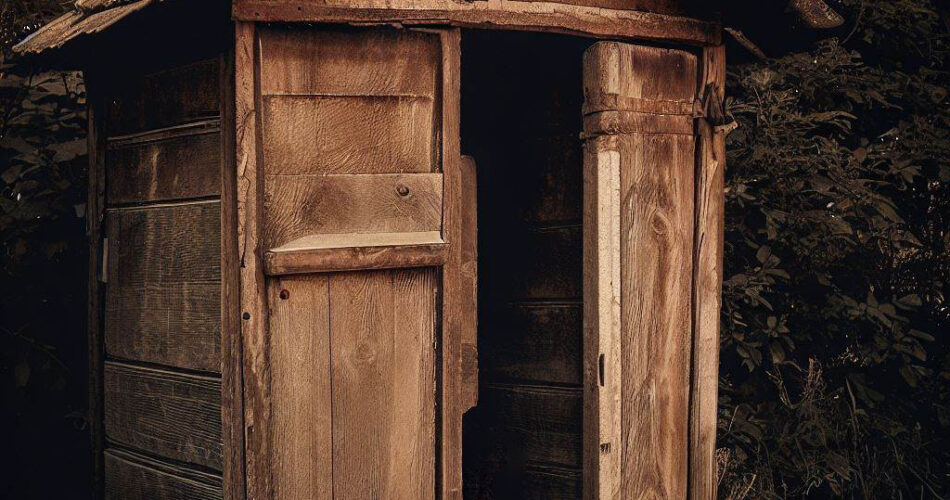A historian and researcher explains how things worked
As explained here, at OsloMet, a University in Oslo, Hutchison works as a historian and researcher. In the study project FoodLessons, she recently attempted to cook using recipes from the 18th century and explained how toilets worked in Norway in the past.
“They didn’t have toilets in the countryside, so instead they had a designated spot. You would go there to pee and poo”, Hutchison says. “Preferably near the water or by a stream. And ideally, the current should flow downward, so they could collect drinking water higher up in the stream”.
Before the 20th century, it was vital to urinate and defecate where the water would flow downward, close to the stream. People could become ill if they drank water that had been contaminated with pee and excrement.
“People didn’t drink water in the old days in Norway because it made them sick. They drank whey. It contained so much alcohol that the bacteria died”, she explains.
On Norwegian farms, outdoor latrines did not appear until the 19th century. Before it, only the affluent had access to outdoor restrooms.
“Previously, they didn’t need it; they could simply go outside and pee. They would just go outdoors or behind the barn to relieve themselves”, Hutchison says.
On some farms, people may use a pole against the house wall as a toilet.
“They could sit there, dangling their legs with their bottoms in the air”, Hutchison says.
“Outdoor toilets with multiple seats that could accommodate several people existed. Did they go to the toilet at the same time?”
“Yes! I’m sure you’ve heard that girls go to the bathroom together. Here, we have both girls and boys who went to the bathroom together. And they would sit there and have a pleasant chat with each other”, she says. As at the time of Roman latrines.
Multiple seats were certainly more useful, continues Hutchison.
“There were many people, children, and servants, and everyone needed to use the toilet. It was more convenient to empty if all the waste ended up in one place rather than in several separate outdoor toilets”, she says.
“Ordinary people rarely wore underwear; they didn’t really use anything. If they needed to use the toilet, they stood with their legs apart and urinated”, Hutchison says.
“Did they not wipe themselves with anything?”
“No, I don’t think so”, she says.
“Didn’t they use moss, leaves, or sticks?”
“When urinating, they didn’t need it. They could use those things when defecating”, she says. “People didn’t shave their pubic hair. But with more hair growth, it probably worked differently for girls when they stood to pee”.
According to Hutchison, if you had resided in an apartment complex, you would have access to a shared outdoor restroom, which the nightman would then empty. At night, the nightman would remove dead animals and clean out the outdoor latrines. Being a nightman wasn’t a choice but rather an acquired position in place of receiving the death penalty.
If not for the nightman, Oslo’s outdoor toilets would have overflowed. Despite yet, the nightman had a very low rank and was not regarded as important. The term “klaskedoen,” which may be interpreted as a “splashtoilet,” was first used in Norway in the nineteenth century. It was a specific kind of outdoor restroom employed in multi-story housing complexes.
There was a pipe running through each toilet in the building because they did not yet have running water. As a result, you could hear the sound of the water splashing when your upstairs neighbor used the restroom, giving rise to the moniker “klaske,” meaning splash.
Nightmen were also popular in England, known as “gong farmers,” which were common during the 18th and 19th centuries. In France, they were called “bourrelier” or “videur de fosses” (cesspit emptier) and existed particularly in Paris, during the 18th and 19th centuries. In some German cities instead, nightmen were known as “Nachtwächter” or “Nachtpfleger“. Before the establishment of modern sewer systems, nightmen were also present in American cities such as New York and Philadelphia during the same centuries. However, they could be found in other European countries during various periods, too, such as Italy, Spain, and the Netherlands.
However, the construction of these toilets in newly constructed homes was outlawed in 1899, and efforts were undertaken to phase out the system in which feces descended multiple stories. Portable buckets were offered as a replacement by the authorities. As a result, sanitation personnel had to carry toilet buckets down the stairs. The Oslo Health Council agreed in 1973 to close all “klaskedoer,” but it wasn’t until 1985 that the final one was shut down.
